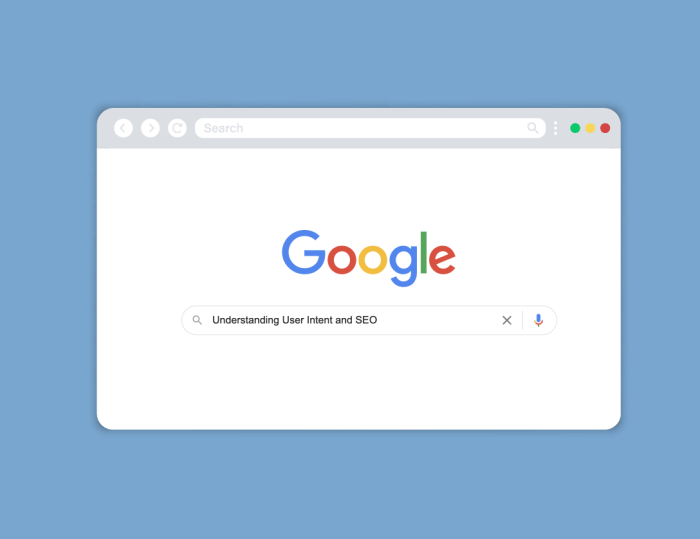Understanding User Intent for SEO – Understanding User Intent for sets the stage for unlocking the secrets behind search engine success. From decoding user behaviors to crafting tailored content, this journey delves into the essence of online visibility and engagement.
Get ready to explore the realm of user intent and its impact on strategies, as we navigate through the intricacies of digital relevance and conversion.
Importance of Understanding User Intent: Understanding User Intent For SEO
Understanding user intent is crucial for because it helps businesses tailor their content to meet the specific needs and desires of their target audience. By knowing what users are searching for and why, companies can create more relevant and engaging content that is more likely to rank well in search engine results.
Impact on Search Engine Rankings
- When businesses align their content with user intent, search engines like Google are more likely to recognize the relevance of the content and rank it higher in search results.
- Conversely, if a website fails to meet user intent, search engines may penalize the site by ranking it lower or even removing it from search results altogether.
Effect on User Experience
User intent also plays a significant role in the overall user experience on a website. When users find content that directly addresses their needs and provides value, they are more likely to engage with the site, spend more time on it, and potentially convert into customers.
Types of User Intent

User intent can be categorized into three main types: informational, navigational, and transactional. Each type reflects a different goal or purpose behind a user’s search query.
Informational User Intent
Informational user intent is when a user is looking for information or answers to a specific question. These queries are usually open-ended and seek to gain knowledge on a particular topic. Examples of informational search queries include:
– “How to tie a tie”
– “What is the capital of France”
– “Benefits of drinking green tea”
Content tailored for informational user intent should focus on providing in-depth information, answering questions clearly, and offering valuable insights on the topic.
Navigational User Intent
Navigational user intent is when a user is looking for a specific website or webpage. These queries are more direct and aim to reach a particular online destination. Examples of navigational search queries include:
– “Facebook login”
– “Amazon official site”
– “CNN breaking news”
To cater to navigational user intent, content should include clear navigation links, easy access to desired pages, and relevant information to guide users to their intended destination.
Transactional User Intent
Transactional user intent is when a user is ready to make a purchase or take a specific action. These queries signal an intent to buy, sign up, or engage with a product or service. Examples of transactional search queries include:
– “Buy iPhone 12 Pro Max”
– “Sign up for yoga classes”
– “Best pizza delivery near me”
Content geared towards transactional user intent should include clear calls-to-action, product/service descriptions, pricing information, and easy checkout processes to facilitate conversions.
Tools for Analyzing User Intent
When it comes to analyzing user intent for purposes, there are several tools available that can help you gain valuable insights into what users are searching for and how to optimize your content accordingly.
One popular tool for analyzing user intent is Google Analytics. This tool provides detailed information about the s that are driving traffic to your website, as well as user behavior once they land on your site. By analyzing this data, you can better understand what users are looking for and tailor your content to meet their needs.
Another useful tool is SEMrush. This tool allows you to conduct research, analyze competition, and track the performance of your efforts. By using SEMrush, you can identify the s that are driving traffic to your competitors’ sites and use this information to optimize your own content.
Ahrefs is another valuable tool for understanding user intent. This tool provides insights into the backlink profiles of websites, as well as research and competitive analysis. By using Ahrefs, you can identify the s that are most relevant to your target audience and create content that aligns with their search intent.
Using Google Analytics to Analyze User Intent
To gain insights into user intent using Google Analytics, start by navigating to the “Behavior” section and clicking on “Site Content” and then “Landing Pages.” Here, you can see which pages on your website are attracting the most traffic and analyze the s that are driving this traffic. Pay attention to metrics like bounce rate, time on page, and conversion rate to understand how users are interacting with your content and whether it aligns with their intent.
Optimizing Content for User Intent

To optimize content for user intent, it is crucial to understand the different types of user intent and tailor your content accordingly. By aligning your content with user intent, you can improve your chances of ranking higher in search engine results pages. Here are some strategies to optimize content based on user intent:
Creating Relevant and Engaging Content
Creating content that is relevant and engaging is essential for addressing user intent effectively. Make sure your content provides value to the user and answers their queries or fulfills their needs. Use language that resonates with your target audience and keep the content easy to read and understand.
Incorporating s Strategically
Incorporating s strategically in your content can help improve its visibility and relevance to user intent. Conduct research to identify relevant s for each type of user intent and integrate them naturally into your content. Avoid stuffing, as it can negatively impact user experience and rankings.
Optimizing Meta Tags and Descriptions, Understanding User Intent for SEO
Optimizing meta tags and descriptions can make your content more appealing to users and search engines. Craft compelling meta titles and descriptions that accurately represent the content of the page and entice users to click through. Include relevant s in your meta tags to improve visibility for specific user intent queries.
Creating Different Types of Content
To address various user intent types effectively, consider creating different types of content such as blog posts, videos, infographics, and podcasts. Diversifying your content formats can cater to different user preferences and enhance the overall user experience. Make sure each piece of content is optimized for specific user intent to maximize its impact.





